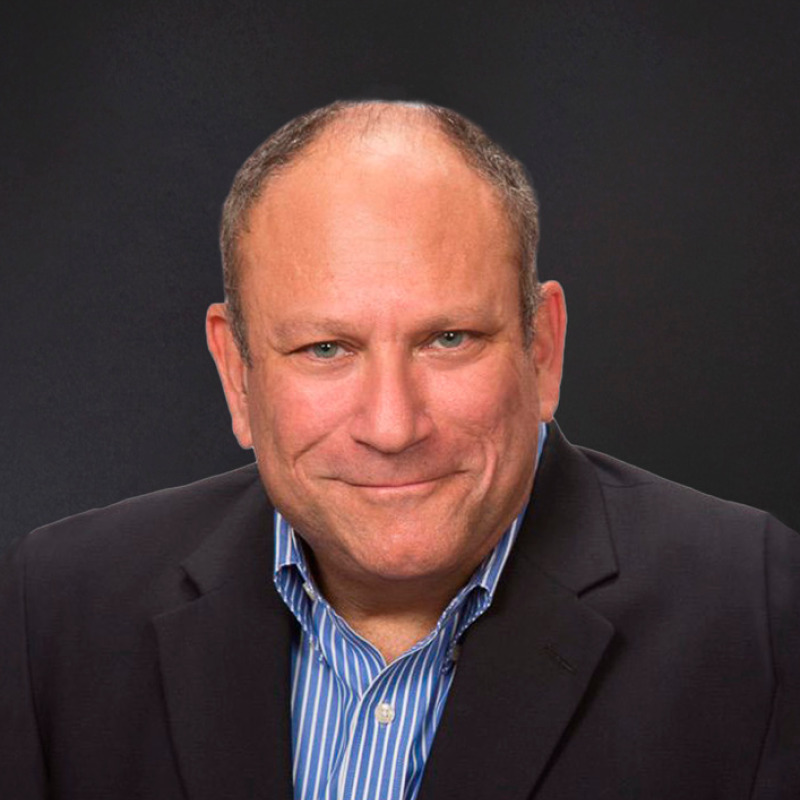
Noncompetes have been a subject of much interest here at Truth on the Market (see Alden Abbott, Brian Albrecht, Corbin Barthold, Gus Hurwitz, Richard Pierce Jr., and your humble-if-obsessive scribe here, here, here, here, and here). They’re also something I’ve studied independently—first, at the Federal Trade Commission (FTC) and then, for example, here.
I was going to leave the topic alone for a couple of weeks. For one thing, we’re expecting a decision on a challenge to the FTC’s noncompete rule by the end of the month from the U.S. District Court for the Northern District of Texas. That, of course, will not end the matter. The FTC already lost a preliminary round in Texas, but it won one in the U.S. District Court for the Eastern District of Pennsylvania, where yet another challenge to the rule suffered a preliminary setback when Judge Kelly Hodge denied a motion for a stay of the rule’s effective date.
A circuit split may be brewing, as former FTC Commissioner Maureen Ohlhausen has observed, and not a few of us expect the question of the FTC’s authority to issue competition rules—or, perhaps, just sweeping competition rules such as these—to get to the U.S. Supreme Court. (See Dan Crane’s poll of law professors on the fate of the rule here.)
But then another federal court just weighed in earlier this week. On Aug. 14, Judge Timothy J. Corrigan, of the U.S. District Court for the Middle District of Florida issued a preliminary injunction in the case of Properties of the Villages Inc. v. FTC. To cut to the chase, Judge Corrigan stayed the effective date of the rule. Reading his decision from the bench, Judge Corrigan ruled, as had the Northern District of Texas court, that the plaintiff showed a “substantial likelihood of success on the merits.”
In this case, the court gave some degree of credence to the plaintiff’s claim that the FTC lacks the statutory authority to promulgate substantive competition rules under Section 6(g) of the FTC Act. Some, but not enough to meet its burden under 11th Circuit precedent for a preliminary injunction.
Rather, Judge Corrigan based his decision on the major questions doctrine. Quoting the Supreme Court, he notes that, “[w]hen an agency claims to have the power to issue rules of ‘extraordinary . . . economic and political significance,’ it must ‘point to “clear congressional authorization” for the power it claims.’”
So, once again, we have a district court opinion on a preliminary injunction. We still expect a decision on the merits from the Northern District of Texas by the end of the month. And we still see a circuit split brewing. This will be an interesting fall in Washington. There is, of course, the little matter of the coming presidential election. But not just that.
That’s Our Story and We’re Sticking to It
I was wasting a bit of time on X.com (the platform formerly known as Twitter), and I saw this post from the FTC:
The FTC’s noncompete ban is estimates to cover 495,988 Hawaiian workers. Read about this Hawaiian TV businessperson’s experience with #noncompetes that take advantage of fresh college graduates: https://t.co/AqPdqSAN0E #noncompeteban pic.twitter.com/QIKoOu7cqL
— FTC (@FTC) August 13, 2024
Having read a little bit about Hawaiian labor markets—and not a little bit about state-law restrictions on noncompetes—I had to wonder.
First, Hawaii is a small state, and its state government reports that “[i]n the first quarter of 2024, the civilian labor force averaged 672,600.” 495,988 is a rather large share of 672,600 (about 74%). The scope of the rule is broad, indeed (hence major-questions-doctrine issues) but maybe not that broad.
We don’t really know how many workers are covered nationwide by noncompete agreements, but survey evidence cited by the FTC in its notice of proposed rulemaking suggests it’s about 18% (see here and here). And 18% of 672,000 is only about 121,000. But arguably, the rule would extend protection to workers who are not covered by a noncompete, but might be.
Still, the Federal Reserve Bank of St. Louis estimates that, as of May 2024, about 71,200 of Hawaii’s workers are state employees. They would not be covered by the rule, and neither would the 23,453 federal civilian employees reported by the federal Office of Personnel Management as living in Hawaii. 672 – 94 = 578, so now we’re left wondering whether the rule would cover 86% of the civilian labor force.
Then, of course, the FTC itself recognizes that its jurisdiction (under Section 5 of the FTC Act, which is the claimed authority for the FTC’s rule) does not extend to nonprofits, although it goes to great pains to note that a mere claim of nonprofit status may not suffice to earn exemption, to the extent that Section 5 may be applied to entities claiming nonprofit status “if they are in fact profit-making enterprises” (for more on the law of bona fide vs ersatz nonprofits, see me here).
So, for the most part, hospitals, health-care clinics, private schools (including various private universities and lower schools, such as the Punahou School, which boasts former President Barack Obama as a graduate), religious organizations (to the extent that they are bona fide nonprofits), nonprofit museums, cultural centers, etc.—they’re not subject to Section 5 scrutiny, and would not be subject to the noncompete rule (even supposing it survives court challenges).
Are we getting close to 672,000?
And as the FTC also recognizes: “Congress removed certain enumerated industries, activities, or entities . . . from the Commission’s jurisdiction.” That is, banks, savings and loan institutions, federal credit unions, common carriers, air carriers and foreign air carriers, etc., would be beyond the rule’s reach. And, thus, their employees would also be beyond the rule’s protection.
Closer still? Over?
There are, moreover, some carve outs in the rule itself. For example, the “rule does not apply to non- competes entered into by a person pursuant to a bona fide sale of a business entity.” That goes for small businesses as well as large ones. And “f]or senior executives, existing non-competes can remain in force.” I suppose we might quibble over, e.g., employees of private tech firms and attorneys—state law already renders noncompetes void for those workers, although the FTC might argue that a federal rule would still apply, even if it were redundant with state law.
But those employees aside, I find myself wondering whether the new rule is supposed to protect more or less than 100% of the state’s labor force whose employers could potentially be subject to the FTC’s jurisdiction. It is, indeed, a sweeping rule, but anything more than 100% seems like a lot. Does the FTC just want to give it the proverbial 110% when it comes to protecting Hawaii’s workers?
How about Minnesota? The FTC notes, almost correctly, that “Minnesota is the most recent of 4 states to ban non-compete agreements.” Minnesota doesn’t exactly ban noncompetes, but it did enact a statute in 2023 that renders most such agreements in the state “void and unenforceable.” That is the state’s prerogative and, not incidentally, a useful occasion for an event study.
It does, however, suggest a question about the FTC’s “statewide impact” projection in Minnesota. I don’t think they really mean to suggest that the FTC’s rule will result in “8,500 more new businesses each year, and $400-480 billion in increased wages over the next decade” in Minnesota alone (they repeat these presumably national numbers on other state slides).
Moreover, they shouldn’t have any Minnesota-specific projections—not, at least, with any confidence. The FTC has roughly zero (ok, exactly zero) studies indicating the effects of a state-law change such as Minnesota’s. Ask about the delta when such a state law is augmented by a federal regulation, and the literature is still nil. There hasn’t been such a federal rule. And as I asked way back in January 2023, “Does it matter that the FTC simply doesn’t have the personnel (or congressionally appropriated budget) to enforce such a sweeping regulation”?
Once more, and with feeling: I’m not arguing (nor have I ever argued) that noncompete agreements are universally procompetitive. As my International Center for Law & Economics (ICLE) colleagues and I pointed out in comments on the proposed rule, and as I noted in a health-policy article here, there are indeed circumstances under which noncompete agreements can be anticompetitive. And competition concerns are not the only concerns one might have about various noncompete agreements.
But some—or even many—circumstances are not all or nearly all. Harms are not the whole story. There are contexts in which procompetitive reasons for noncompetes make sense, and the empirical literature is mixed, and far from settled.
This is even before we ask about, e.g., the FTC’s authority to adopt competition rules under Section 6 of the FTC Act (or its lack of such ability). The FTC is—certainly has been—an expert agency. It employs a considerable number of very able PhD economists. But the numbers in the NPRM were already dodgy (see, for example, the Global Antitrust Institute’s comments here; ICLE’s comments here), and now they are winging it, state by state.
I’m sorry if this seems nitpicky. I don’t expect the rule to endure, and I doubt that the FTC has the capacity to enforce it, in any case. But why hang more dross on the ephemeral scaffolding? Why not face the empirical challenges—and lacunae—head on? Why not continue to develop the research and the agency’s enforcement experience, litigate good antitrust cases, and leave other issues to the states? Indeed, why not preserve the institution’s credibility?




